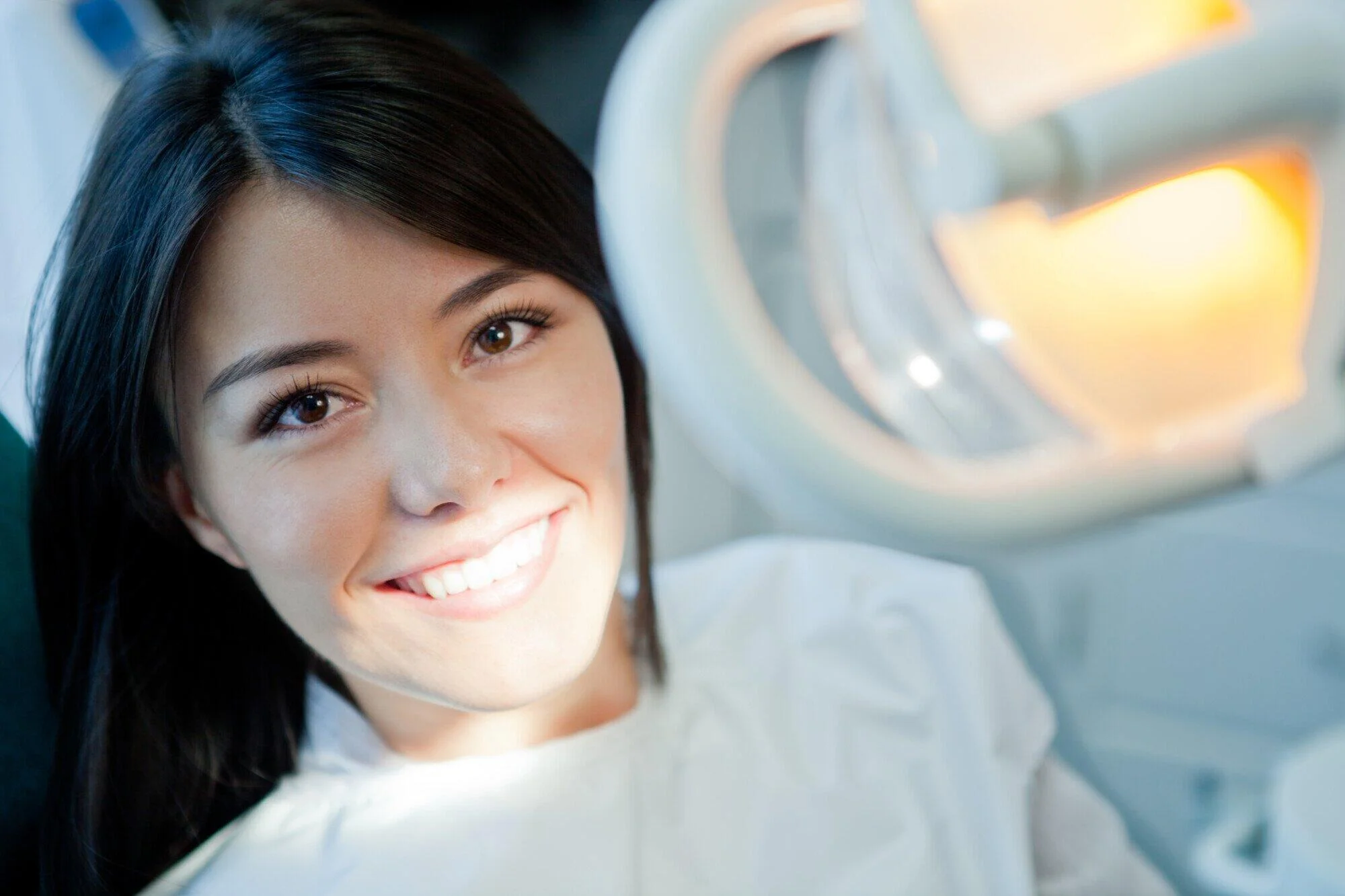Health
Beyond Brushing and Flossing: Essential Aspects of Routine Dental Care

Most people are well aware of the importance of brushing and flossing in maintaining good oral hygiene. These practices form the bedrock of routine dental care. However, maintaining optimal dental health goes beyond these basic habits.
Comprehensive dental care involves a combination of practices, regular check-ups, and lifestyle choices. In this article, we will explore essential aspects of routine dental care that go beyond brushing and flossing. Read on.
The Role of Diet in Dental Health
In addition to regular brushing and flossing, maintaining a healthy diet is an essential aspect of routine dental care. Here’s why:
Balanced Nutrition
What you eat plays a significant role in the health of your teeth and gums. A diet rich in vitamins and minerals, particularly calcium and phosphorus, strengthens tooth enamel. This makes it more resistant to decay.
To give your teeth the nutrients they need, eat:
- dairy products
- leafy greens
- nuts
- fish
Limiting Sugary Foods and Drinks
Sugary foods and beverages are major culprits in tooth decay. Bacteria in your mouth feed on sugars, producing acids that erode tooth enamel. While it may be impossible to eliminate sugar, limiting your intake and opting for healthier alternatives can significantly benefit your oral health.
Hydration
Staying hydrated is often overlooked but is crucial for oral health. Water helps wash away food particles and bacteria, preventing plaque buildup. Drinking water also stimulates saliva production, which acts as a natural defense against tooth decay by neutralizing harmful acids.
The Importance of Regular Dental Check-ups
Regular dental checkups are crucial for maintaining good oral health. Here’s why:
Early Detection of Issues
Regular dental check-ups are essential for preventing and addressing dental problems before they become severe.
Dentists can identify early signs of cavities, gum disease, and other issues that you may not notice yourself. Early detection allows for more straightforward and less invasive treatments, saving you discomfort and expense in the long run.
Professional Cleaning
Even with meticulous brushing and flossing, plaque and tartar can accumulate in hard-to-reach areas. Professional cleanings by a dental hygienist remove this buildup, reducing the risk of cavities and gum disease.
These regular cleanings help maintain the health and appearance of your teeth. Check out Smileworks General & Cosmetic Dentistry to learn more about dental hygiene tips.
Oral Cancer Screening
Oral cancer is a serious condition that can be life-threatening if not caught early. During routine check-ups, dentists examine your mouth for any signs of oral cancer, such as:
- unusual sores
- lumps
- discolorations
Regular screenings increase the chances of early detection and successful treatment.
Proper Brushing and Flossing Techniques
Proper brushing and flossing techniques are essential aspects of routine dental care. Here are some oral health tips.
Effective Brushing
While brushing is a fundamental aspect of dental care, it’s essential to do it correctly. Use a soft-bristled toothbrush and fluoride toothpaste.
Brush your teeth for at least two minutes, twice a day, using gentle circular motions. Pay attention to all surfaces of your teeth, including the front, back, and chewing surfaces, as well as your tongue and the roof of your mouth.
Correct Flossing
Flossing is crucial for removing food particles and plaque between teeth that a toothbrush cannot reach. Use about 18 inches of dental floss, winding most of it around your middle fingers.
Gently slide the floss between your teeth, curving it around each tooth and moving it up and down. Be careful not to snap the floss, as this can damage your gums.
The Role of Mouthwash
Mouthwash can be a valuable addition to your daily oral hygiene routine. There are two main types: cosmetic and therapeutic.
Cosmetic mouthwashes freshen breath temporarily but do not address underlying issues. Therapeutic mouthwashes, on the other hand, contain active ingredients like fluoride, antibacterial agents, and anti-inflammatory compounds that help prevent cavities, reduce plaque, and manage gum disease.
Proper Use
To maximize the benefits of mouthwash, use it correctly. Follow the instructions on the label and avoid eating or drinking for at least 30 minutes after use.
Swish the mouthwash around your mouth for the recommended time, usually 30 seconds, and then spit it out. Do not rinse your mouth with water afterward, as this can dilute the mouthwash’s effectiveness.
The Impact of Lifestyle Choices
Healthy lifestyle choices play a crucial role in maintaining a healthy smile. Here are some oral health tips:
Smoking and Tobacco Use
Smoking and using tobacco products are detrimental to your oral health. They increase the risk of gum disease, tooth decay, and oral cancer.
Tobacco use also stains teeth and contributes to bad breath. Quitting smoking and avoiding tobacco products can significantly improve your oral health and overall well-being.
Alcohol Consumption
Excessive alcohol consumption can harm your oral health. Alcoholic beverages, particularly those high in sugar and acidity, contribute to tooth decay and gum disease.
Additionally, alcohol can dry out your mouth, reducing saliva production and increasing the risk of dental problems. Moderating your alcohol intake and maintaining good oral hygiene can help mitigate these effects.
Stress Management
Stress can indirectly impact your oral health. High stress levels can lead to poor oral hygiene, unhealthy eating habits, and teeth grinding (bruxism). Managing stress through relaxation techniques, exercise, and adequate sleep can improve your overall health, including your oral health.
The Connection Between Oral Health and Overall Health
Several essential aspects of routine dental care are crucial for maintaining a healthy mouth and body. Here’s why:
Heart Disease
Research has shown a significant link between oral health and cardiovascular health. Poor oral hygiene and gum disease can increase the risk of heart disease, stroke, and other cardiovascular conditions. Maintaining good oral health can contribute to a healthy heart.
Diabetes
Diabetes and oral health are closely related. People with diabetes are more susceptible to gum disease, and gum disease can make it more challenging to control blood sugar levels. Proper dental care and regular check-ups are essential for managing both conditions effectively.
Pregnancy
Pregnant women are more prone to gum disease due to hormonal changes. Poor oral health during pregnancy can lead to complications such as preterm birth and low birth weight. Expectant mothers should prioritize oral hygiene and seek regular dental care to ensure a healthy pregnancy.
Create a Routine Dental Care Today
In conclusion, maintaining good dental hygiene goes beyond just brushing and flossing. Regular dental check-ups, a balanced diet, and avoiding harmful habits are crucial aspects of routine dental care. Don’t neglect the health of your teeth and gums, schedule a dental appointment today and take the first step towards a healthy smile.
If you want to read more articles, visit our blog.
Health
Dental Facings vs. Veneers: What’s the Difference?

Have you ever wondered about the best way to enhance your smile?
Many people consider dental facings and veneers when looking to brighten their teeth. Both options can transform your appearance, but they are different in many ways.
Understanding these differences can help you make the right choice. Keep reading to discover which option might be the best fit for your smile needs.
Understanding Dental Facings
Dental facings are thin layers that cover the front of your teeth to improve their look. They can help fix small chips, gaps, or stains, making your smile brighter and more attractive. Below, we’ll explore what dental facings are, how they work, and the benefits they offer.
What Are Dental Facings?
Dental facings are made from materials like porcelain or composite resin. They are custom-made for each patient to fit perfectly over the teeth.
By adding these thin layers, facings can make teeth look whiter and smoother. They are especially good for hiding small problems such as stains or unevenness. They can give you a bright and even smile that boosts your confidence.
Benefits of Dental Facings
Dental facings can greatly improve the appearance of your teeth. They are effective at covering up stains, chips, and gaps, making your smile look fresh and clean.
Additionally, they are less invasive than other options. They require minimal shaping of the original tooth.
With proper care, dental facings can last for many years. They provide a beautiful smile that boosts your self-esteem and confidence in social situations.
When to Choose Facings
You might consider dental facings if you have minor imperfections in your teeth, such as small chips or discoloration. They are a great option for people who want a smile makeover without extensive procedures.
If you want to enhance your smile for special events or everyday confidence, facings can provide a quick and effective solution. It is a great alternative to a full-mouth reconstruction. Discussing your needs with a dentist will help determine if facings are right for you.
Exploring Veneers
Veneers are another popular option for enhancing smiles. They are thin shells usually made of porcelain that cover the front surface of your teeth. Unlike dental facings, veneers are for more significant cosmetic issues.
What Are Veneers?
Veneers are thin, custom-made shells that fit over the front of your teeth. They are mostly made from porcelain, which looks like natural teeth. Veneers help fix more serious dental problems, such as bigger chips, cracks, or severe discoloration.
They can change the shape, size, or color of your teeth, creating a smooth and even smile that many people desire. Veneers are often chosen for a complete smile makeover.
Types of Veneers Available
There are several types of veneers available to suit different needs. The most common type is porcelain veneers, which are strong and mimic the look of natural teeth.
Composite veneers are another option. They’re made from a tooth-colored resin and can be applied in one visit.
Finally, there are pre-made veneers that are more affordable and quick to deliver. Keep in mind though that they may not fit as perfectly as custom options.
Veneer Advantages and Disadvantages
Veneers have several advantages. They can improve the appearance of your teeth, making them whiter and more uniform. They also resist stains better than natural teeth.
However, there are some drawbacks. The process of placing veneers can be expensive, and once applied, they cannot be removed. Additionally, some people may need to have a small amount of their tooth enamel removed to make space for the veneer.
Application Process
Understanding the application of dental facings and veneers can help you feel more confident about your choice. The process can vary depending on the type of enhancement you choose.
Below, we’ll talk about the steps involved in applying both dental facings and veneers. With this, you’ll know what to expect during your visit to the dentist.
How Facings Are Applied
Applying dental facings is a straightforward process. First, the dentist will clean your teeth and may remove a little enamel to help the facings stick better. Then, they take impressions of your teeth to create custom facings.
Once ready, the dentist will carefully place the facings on your teeth using a special adhesive. Finally, they will check the fit and appearance. They’ll be making adjustments if needed before polishing them for a perfect shine.
Veneer Application Steps
The process of getting veneers usually takes two visits to the dentist. During the first visit, the dentist will clean your teeth and remove a small amount of enamel to make space for the veneers. They will then take impressions of your teeth to create custom veneers.
During the second visit, the dentist will place the veneers on your teeth with a special glue. This ensures that they look natural and feel comfortable.
Preparation and Aftercare
Getting dental facings or veneers requires some steps to prepare and care for them properly. Before the procedure, your dentist will check your teeth and discuss the best option for you.
After placement, it is important to keep your teeth clean. You should also avoid hard foods that could damage the facings or veneers. Regular dental check-ups will also help maintain your new smile and ensure everything stays in good shape.
Cost Comparison
When considering dental facings and veneers, it’s crucial to understand the costs involved. Prices can vary based on factors like the materials used and the complexity of the procedure.
Below, we’ll compare the costs of dental facings and veneers. With this, you can make an informed decision about which option fits your budget.
Cost of Dental Facings
The cost of dental facings can vary depending on where you go and the materials used. On average, you might pay between $200 and $1,000 for each tooth.
This price usually includes the dentist’s work and the materials needed to make your custom facings. It is important to ask your dentist for a detailed estimate before starting the procedure, so you know what to expect.
Veneer Cost Overview
The cost of veneers usually ranges from $500 to $2,500 for each tooth. This range depends on the type of veneer you choose and where you get the treatment.
Porcelain veneers are often more expensive but last longer and look more natural. Composite veneers are cheaper but may not be as strong.
Always ask your dentist for a clear estimate for these cosmetic dental solutions. By doing so, you’ll understand the total cost before starting the procedure.
Factors Affecting Price
Several factors can affect the price of dental facings and veneers. The type of material used plays a big role in cost, with porcelain usually being more expensive than composite materials.
The dentist’s experience and location also matter. Prices can vary based on where you go for treatment.
Additionally, the complexity of your case might influence the final price. With these factors in mind, it’s important to discuss all details with your dentist.
Making the Right Choice
Choosing between dental facings and veneers can be a big decision. Both options can improve your smile, but each has unique features and benefits. By understanding your options, you’ll feel more confident in deciding which one best suits your needs.
Which Is Better for You?
Deciding between dental facings and veneers depends on your needs and problems with your teeth. If you have small chips or stains, dental facings may be a better fit. They are less costly and need less work on your teeth.
However, if you have bigger issues, such as larger chips or severe discoloration, veneers might be the better choice. Discuss your goals and concerns with your dentist to find the right option for achieving your perfect smile.
Factors to Consider
When choosing between dental facings and veneers, consider your dental issues and preferences. It’s also important to keep your budget in mind. Consider how visible the issues are and how much change you want in your smile.
Talk to your dentist about your goals and what each option offers. Remember to ask about the cost, care needed, and how long each solution will last. By understanding these factors, you can make a better choice for your smile.
Consulting With a Dentist
Before choosing between dental facings and veneers, it’s important to talk to a dentist. They will look at your teeth and listen to your concerns.
The dentist can help you understand your options and guide you on what might work best for your needs. They will explain the steps involved, the costs, and how long the results can last. With their help, you can make a confident decision for a brighter smile.
Dental Facings and Veneers: Choose the Right One for You
When deciding between dental facings and veneers, it’s essential to understand your needs. Be sure to consider your preferences as well. Both options can improve your smile, but they work in different ways.
By consulting with a dentist, you can learn more about how dental facings might help you achieve the look you want. Remember to consider your budget and the care required for each option. A beautiful smile is within your reach!
Are you looking for other helpful content? If so, stay with us and continue reading for more.
Health
Frequently Asked Questions About Braces for Teens

Braces can feel a bit daunting for many teens, but they’re a common part of the journey to a beautiful smile. It’s natural to have questions about how they work, what to expect, and how to take care of them.
Whether it’s about the different types of braces, the cost, or the timeline for treatment, it’s important to get the right answers. Here are some frequently asked questions about braces for teens!
Why Might a Teen Need Braces?
Teens might need braces for several reasons. One common reason is to correct crooked teeth, which can affect their smile and confidence. Braces can also help with gaps between teeth, overcrowded mouths, or bite issues like overbite or underbite.
These problems can make it hard to chew food or speak clearly. Overall, orthodontic treatment helps create a healthy and straight smile, giving teens the confidence they need during this important stage of their lives.
What Are the Different Types of Braces?
Braces come in several types to meet different needs and preferences. Traditional metal braces use stainless steel brackets and wires, making them strong and effective for most cases. Ceramic braces are less visible as they match the color of the teeth, which can make them a popular choice for teens.
For a more discreet option, clear aligners can be used, and they are removable, which makes eating and cleaning easier. It’s best to consult with board certified orthodontists to determine the right option for each individual.
How Long Will I Need to Wear Braces?
The length of time a teen needs to wear braces can vary. On average, most people will have braces on for about 18 to 24 months. However, some may need them for a shorter or longer period, depending on their specific dental care needs.
Factors that influence the duration include the type of braces used, the severity of the dental issues, and how well the teen follows their orthodontist’s instructions. Regular check-ups are important to ensure the treatment stays on track and to make adjustments as needed.
Will Braces Hurt?
Getting braces may cause some discomfort at first. You might feel pressure on your teeth, which is normal as they shift into place. When the braces are adjusted during check-ups, you may experience mild soreness for a few days. However, this feeling usually goes away quickly.
Over-the-counter pain relievers can help if you’re feeling uncomfortable. Eating soft foods and rinsing with warm salt water can also make things easier while you adjust to wearing braces. Remember, any pain is temporary, and many teens find that their smiles are worth it!
Learn All About Braces for Teens
In summary, braces for teens play a pivotal role in guiding them towards achieving an aesthetically pleasing and functional smile. While the journey with braces can present its challenges, the end result is often rewarding, leading to enhanced self-esteem and improved oral health.
As teens embark on this orthodontic adventure, it’s essential to remain informed and proactive, ensuring a smooth process from start to finish.
Health
How Poor Posture Can Lead to Neck Misalignment and How to Correct It

Are you suffering from neck pain? It could be due to neck misalignment, often caused by poor posture.
Many of us spend hours hunched over desks, computers, and smartphones. This consistent slouching results in a misaligned neck, leading to discomfort and chronic pain.
Neck misalignment can even affect your overall health. The good news is that you can correct this with some simple changes.
Let’s explore the causes of spinal alignment issues and effective strategies to improve your posture. Keep on reading!
Understanding Poor Posture
People have worse posture more often than you might think. This is mostly because modern life involves sitting and using electronics for long periods.
Bad posture can happen to you every day, whether you’re working at a desk, driving, or just relaxing on the couch. A lot of people show this by slouching, hunching over, and keeping their head forward. If you ignore these tendencies, they could have serious effects on your health.
The Link Between Posture and Neck Pain
Neck pain is often one of the first signs that your posture may be problematic. When you consistently maintain a poor posture, it puts undue stress on the muscles and ligaments in your neck.
Over time, this stress can lead to chronic pain and discomfort. Moreover, poor posture can also affect the alignment of your neck bones, exacerbating the problem.
How Neck Misalignment Happens
When the cervical vertebrae (the bones in your neck) move out of place, you have neck misalignment. This is often caused by bad posture that lasts for a long time and puts uneven stress on the body.
Misaligned vertebrae can irritate nerves, which can cause pain and make it hard to move around. This condition can get worse if you don’t fix it, and it might even affect your overall spinal health.
Symptoms of Neck Misalignment
You might experience various symptoms if your neck is misaligned. These can range from mild discomfort to severe pain and stiffness.
Other symptoms include headaches, dizziness, and even radiating pain to your shoulders and arms. If you notice any of these symptoms persistently, it’s a clear indicator that you need to address your posture.
Corrective Measures
Being mindful of your posture is the first step towards correcting neck misalignment. Try to keep your back straight, shoulders relaxed, and ears aligned with your shoulders whether you’re standing or sitting.
Regular neck posture correction reminds you to adjust your posture throughout the day. Small changes can make a big difference in maintaining proper alignment.
Exercises to Improve Posture
Exercise can significantly improve your posture and relieve neck pain. Incorporate stretches that target the neck and shoulder muscles into your daily routine.
Strengthening your core also helps in maintaining an upright posture. Consistent exercise will not only correct your posture but also prevent future misalignment.
If you’re experiencing persistent pain, you might want to check out these chiropractic services. By being proactive about maintaining good posture and seeking professional help when necessary, you can alleviate neck pain and improve your overall spinal health.
Effective Ways to Prevent Neck Misalignment
Fixing a misaligned neck is very important for your health as a whole. Neck misalignment can be avoided by regularly practicing good posture.
Do exercises for your neck and shoulders to keep your body in alignment. Pay attention to your posture as you go about your daily life.
If the neck misalignment doesn’t go away, you should see a doctor. Long-term spinal health is ensured by taking preventative steps.
Did you like this guide? Great! Please browse our website for more!

 Business3 months ago
Business3 months agoTex9.Net Crypto: Fast, Secure International Money Transfers with Competitive Rates

 Entertainment2 months ago
Entertainment2 months agoSandra Orlow: Exploring the Life and Legacy of a Cultural Icon

 General1 week ago
General1 week agoBaby Alien Fan Bus: Watch Parts 2 & 3 on Twitter, Reddit!

 General1 week ago
General1 week agoDiana Nyad & Bart Springtime: A Swim to Success

 Business3 months ago
Business3 months agoSnapchat Planets: Exploring Your Streak Universe

 General1 month ago
General1 month agoDeeper Dive into myfavouriteplaces. org:// blog

 Business3 months ago
Business3 months agoFintechZoom Apple Stock: Real-Time Insights and Expert Analysis

 Entertainment3 months ago
Entertainment3 months agoUnlock Your Fantasy: Dive into Coomer Party Free OnlyFans Leaks!
















